One of the greatest pickles you'll have, knowing how to pickle wild ramps is something every forager should know. The best part is that if you don't have a place to dig ramp bulbs you can pickle ramp leaves and stems as well and they're great. Read on and I'll go over what you need to know.
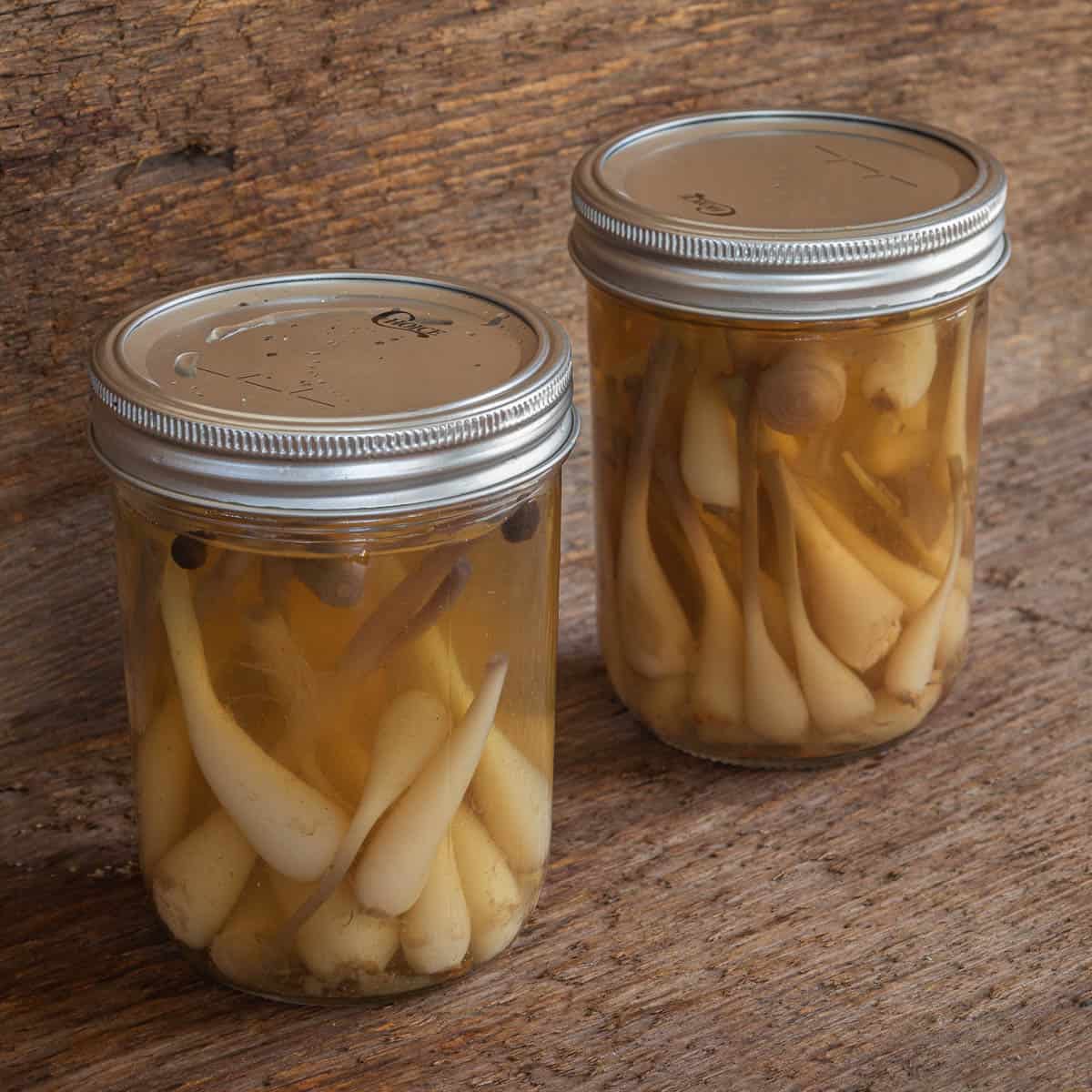
What are Pickled Ramps?
These are the bulbs of wild leeks harvested in the spring that have been pickled. They're best used for making condiments or using anywhere you want a pickled onion flavor. Leeks harvested at the end of the season will have the biggest bulbs.

If you don't have fresh ramps you can use green garlic or spring onions.
How to Pickle Ramps
There's a few options here. For all of them, first the ramps are washed and cleaned. If you want, you can pickle ramp leaves too. You can also save the leaves to make ramp pesto.
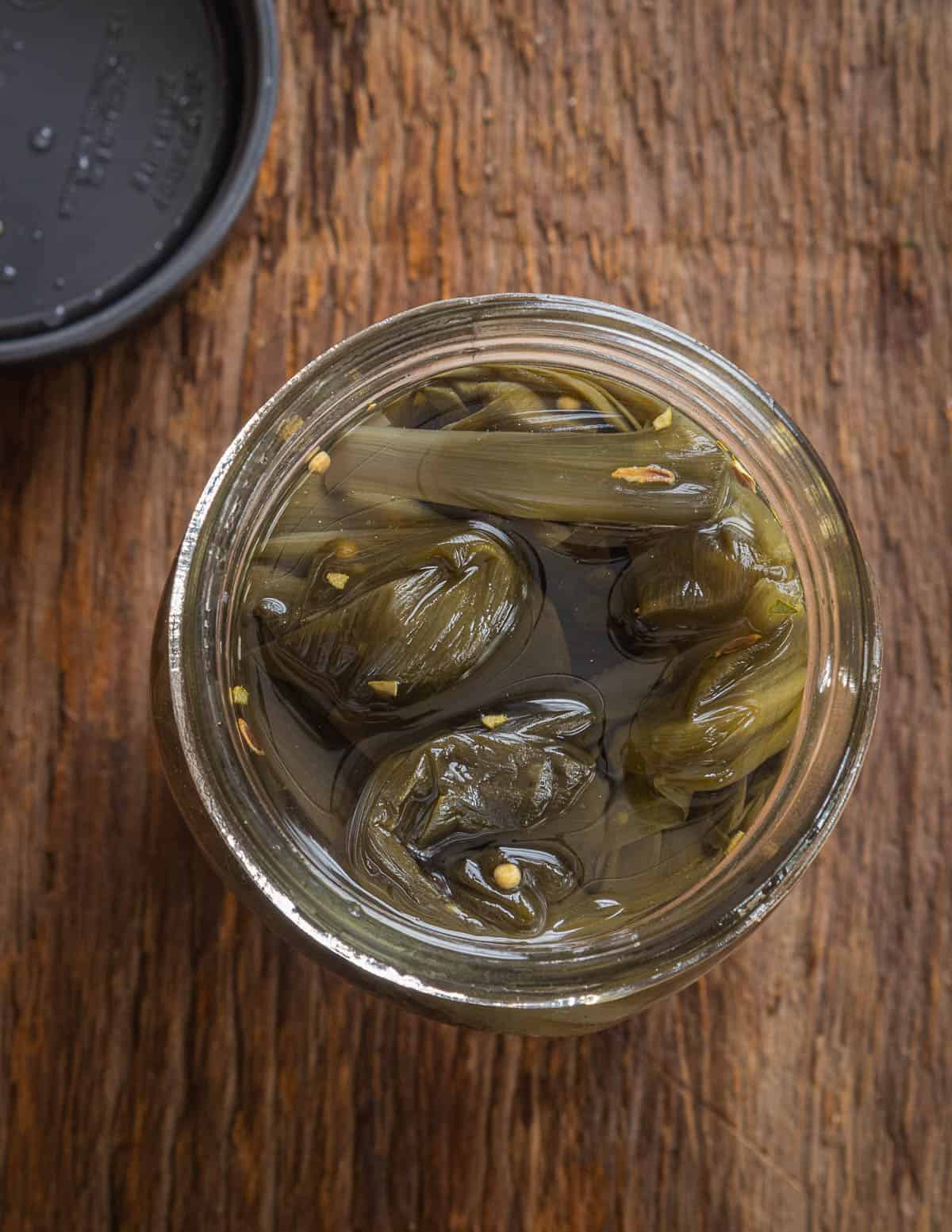
Next you make a pickle brine by boiling water, rice wine vinegar, pickling spices like mustard seeds and red pepper flakes, bay leaves, black peppercorns, sugar and salt.
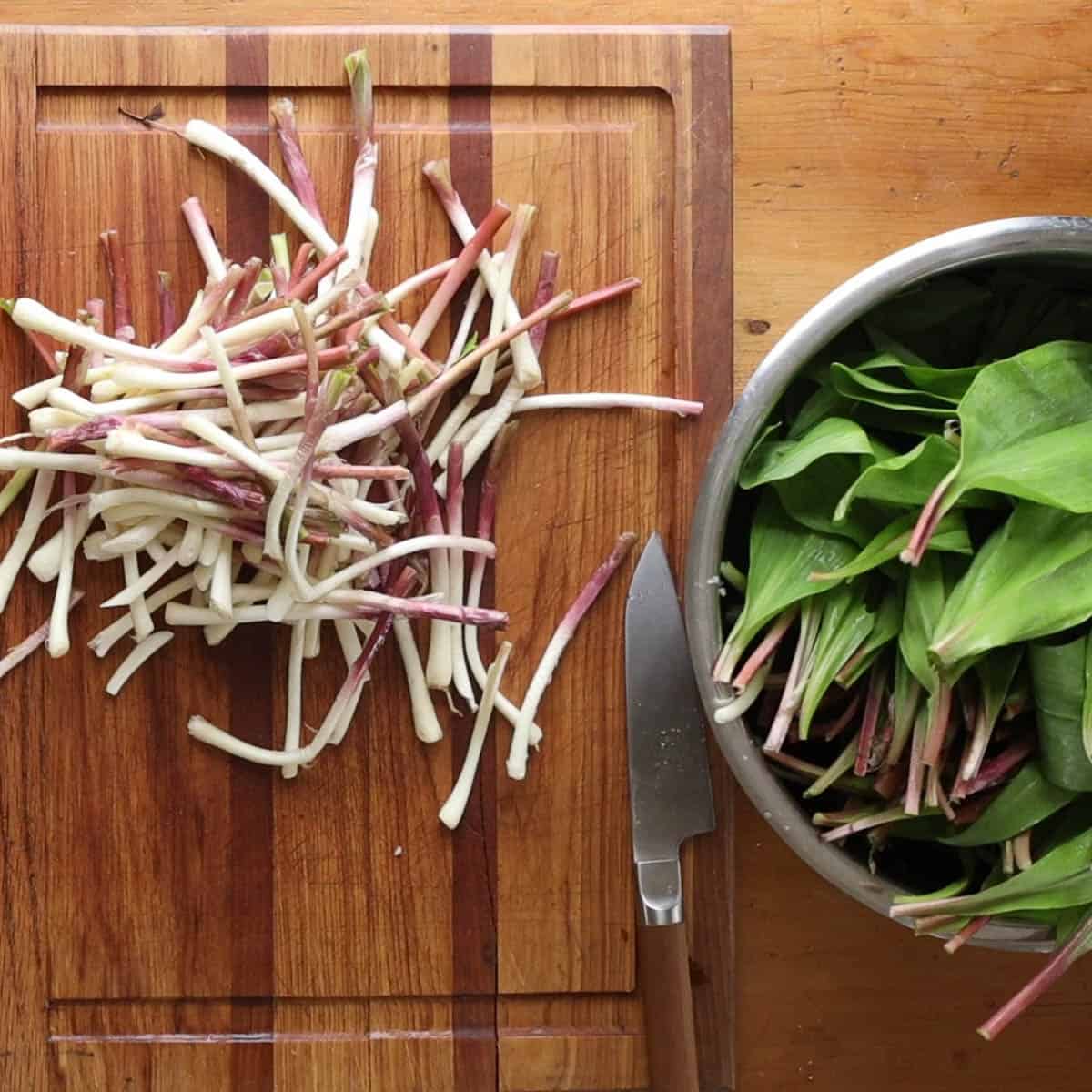
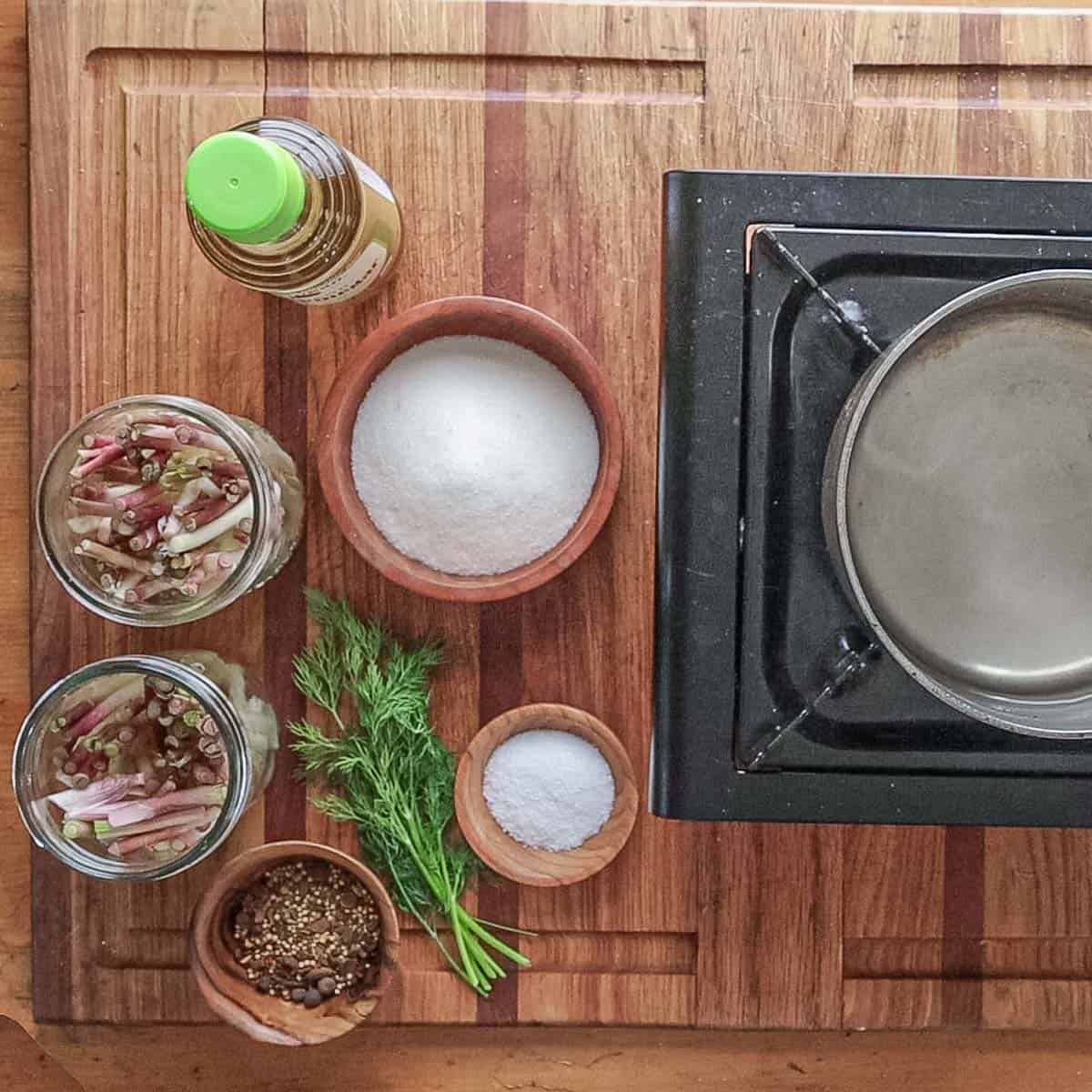
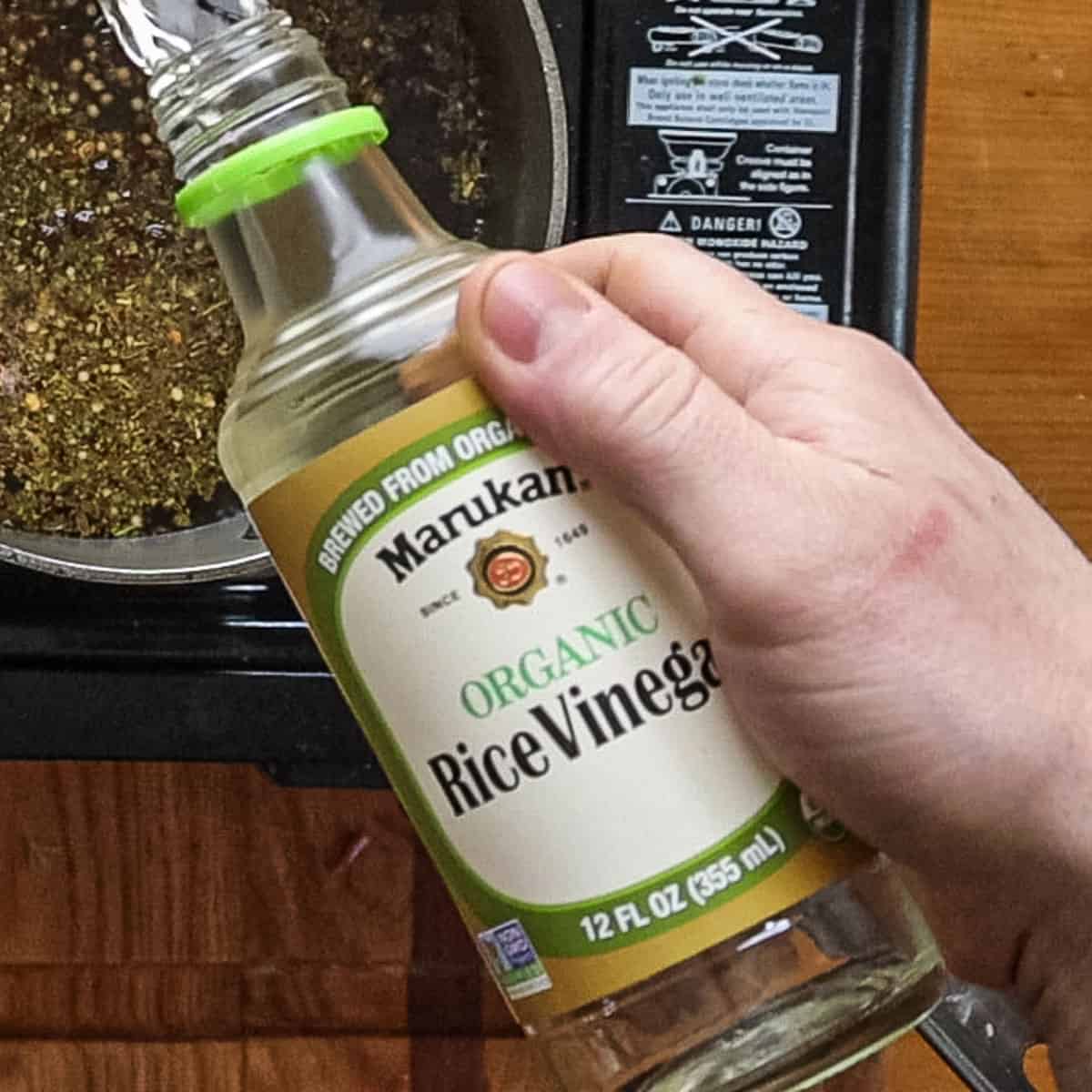
To can pickled ramps to store in a pantry, the bulbs are packed into mason jars, then filled with hot pickling liquid and turned upside down. As they cool the jars seal like canning in a water bath.
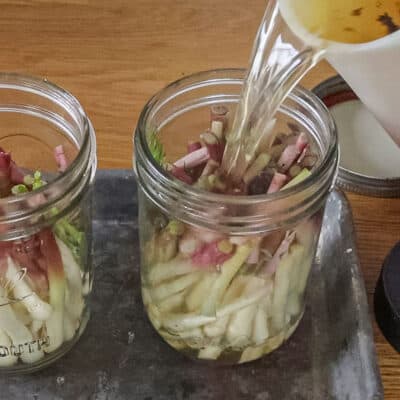
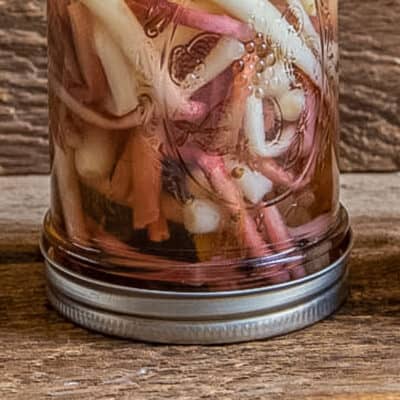
This method isn't approved by the FDA, but it is the only way to keep the ramps crisp unless you store the jars in the fridge. I've used it for many years. If you don't want to do that, use a non-reactive lid and store your pickles in the fridge as shown below.
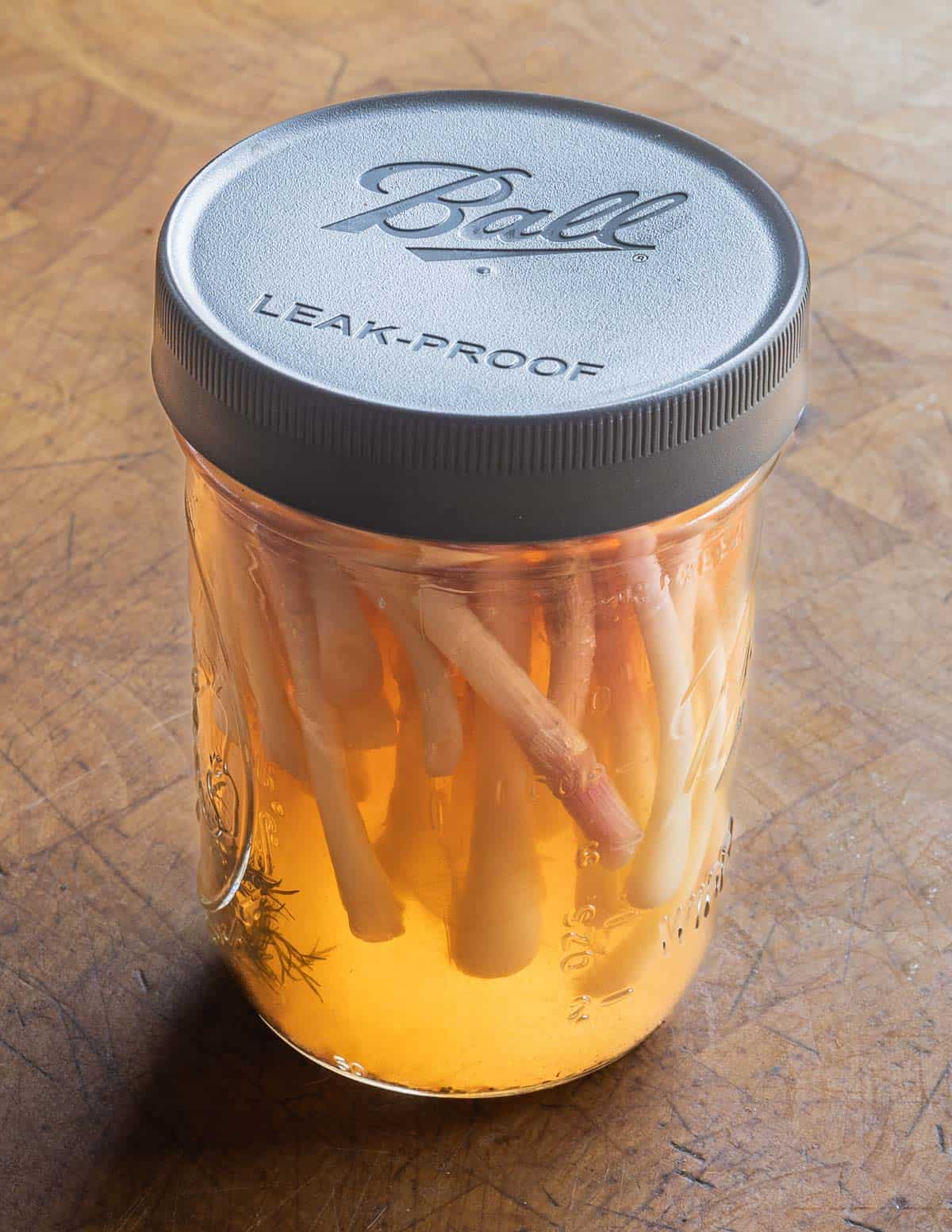
What to do with Pickled Ramps
Lots of recipes describe how to make the pickles, but few explain how to use them. I pickle wild leeks specifically to make condiments like dips and sauces.
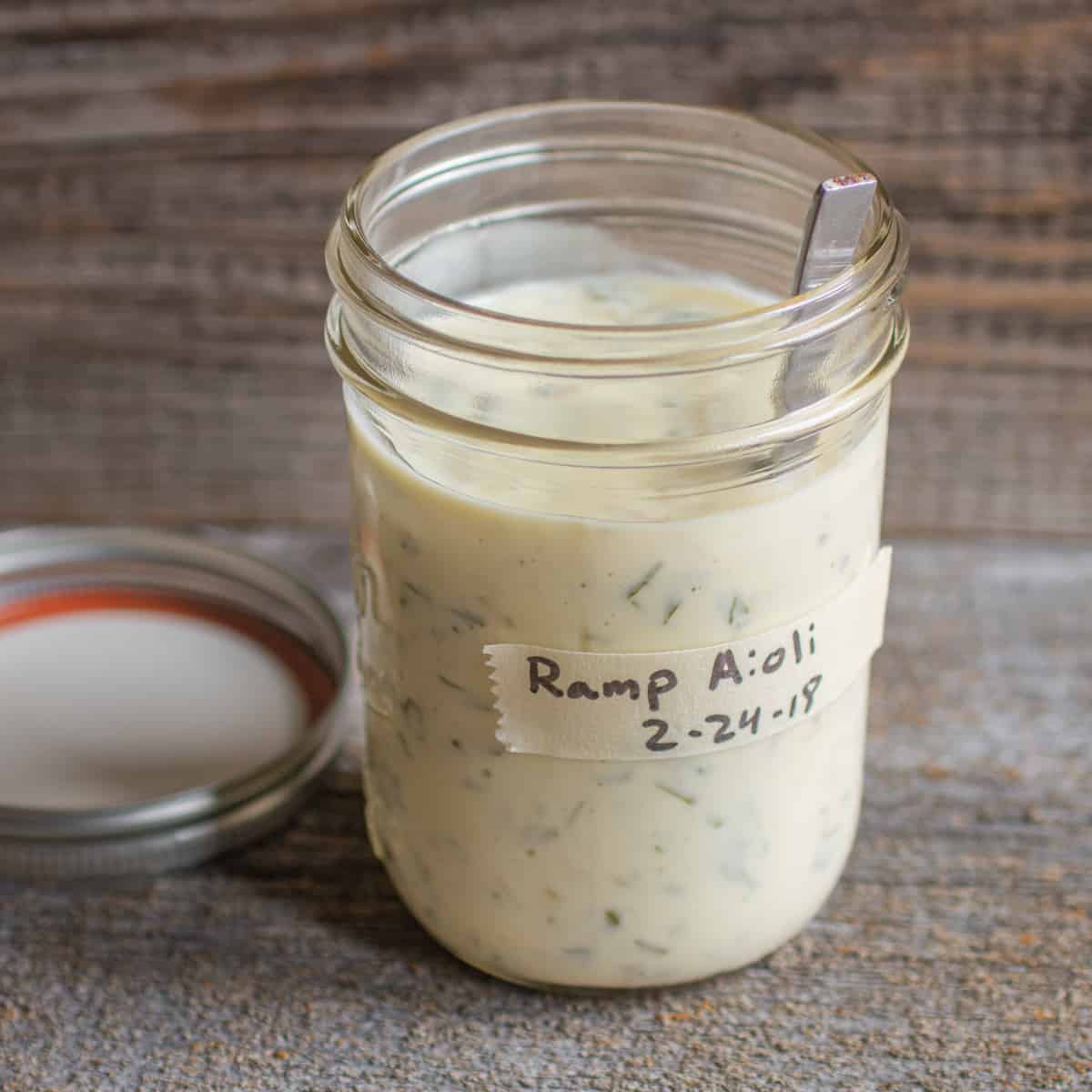
Mayonnaise, sour cream and yogurt based sauces are fantastic, and allow you to use both the pickled bulb and the pickling juice to make things like pickled ramp aioli. Use where you would tartar sauce, like with the fried perch below.
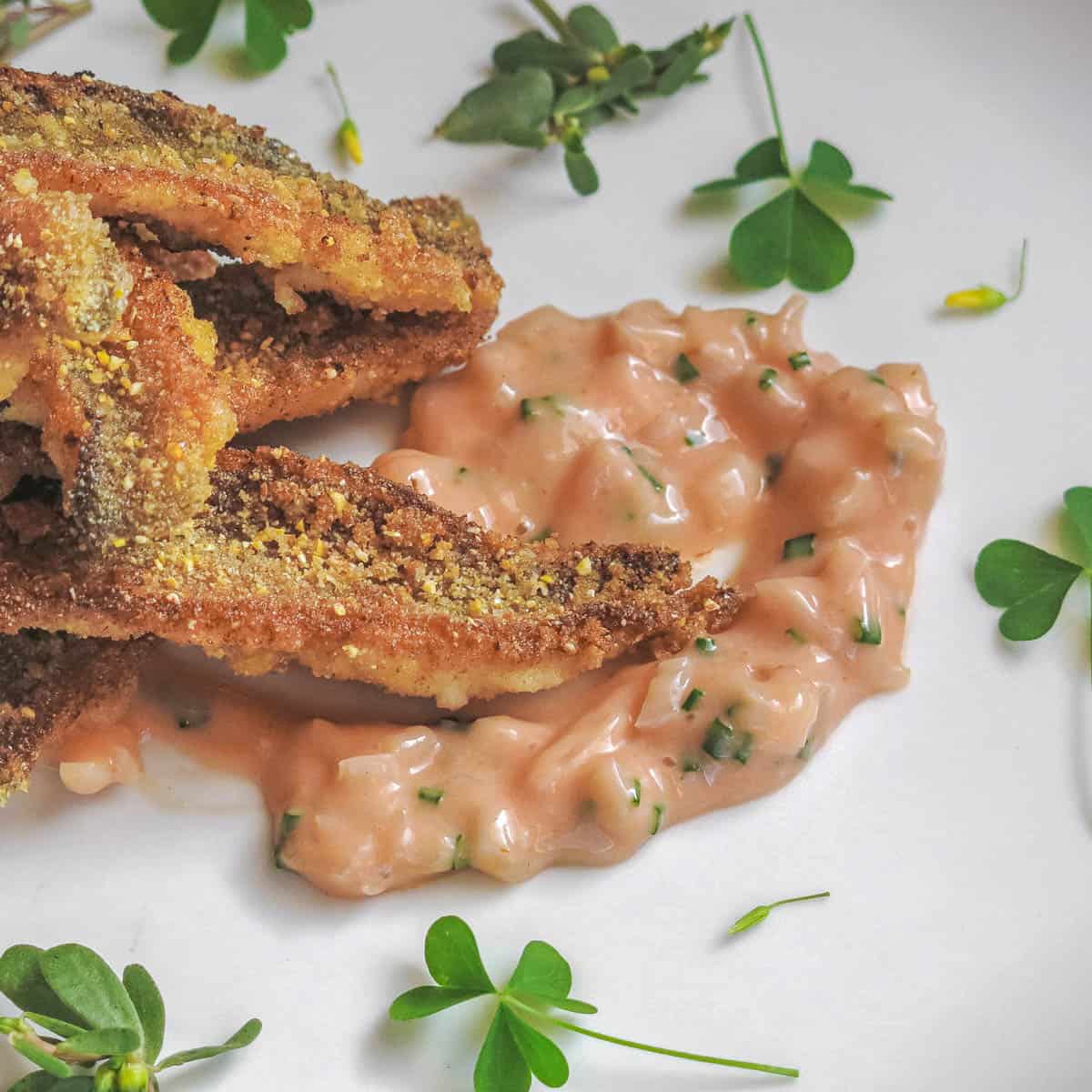
Korean Pickled Onions (Myeongi)
A variation you must try is Myeongi or Korean Pickled onions. My friend Linda Black Elk introduced me to these and I was blown away by how good they are.
It's a soy sauce pickle that's very easy to make and uses the whole plant or just leaves with stems. Put the ramps in a bowl, pour the hot liquid on them, cover the bowl with cling film and cool, then refrigerate as illustrated below.
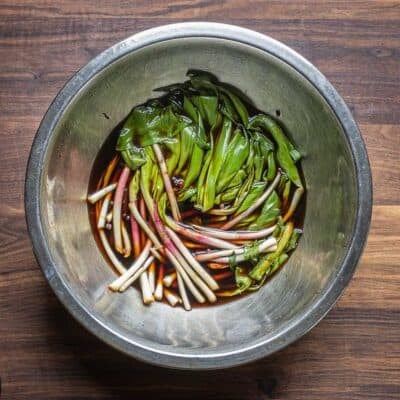
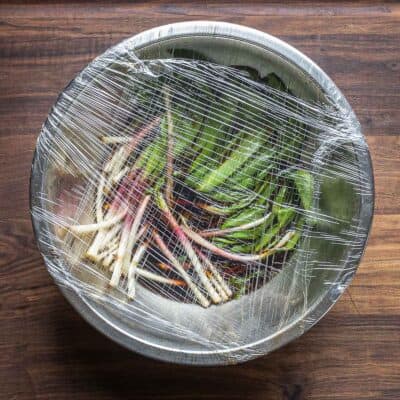
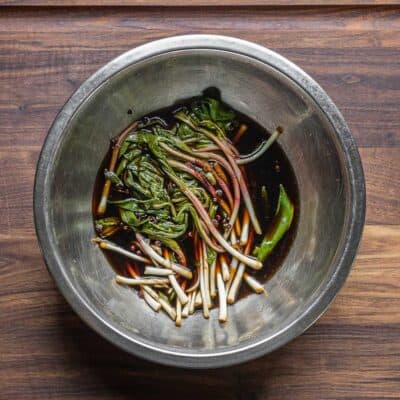

The recipe is described in the notes. It's excellent with rice and fish, pictured below.
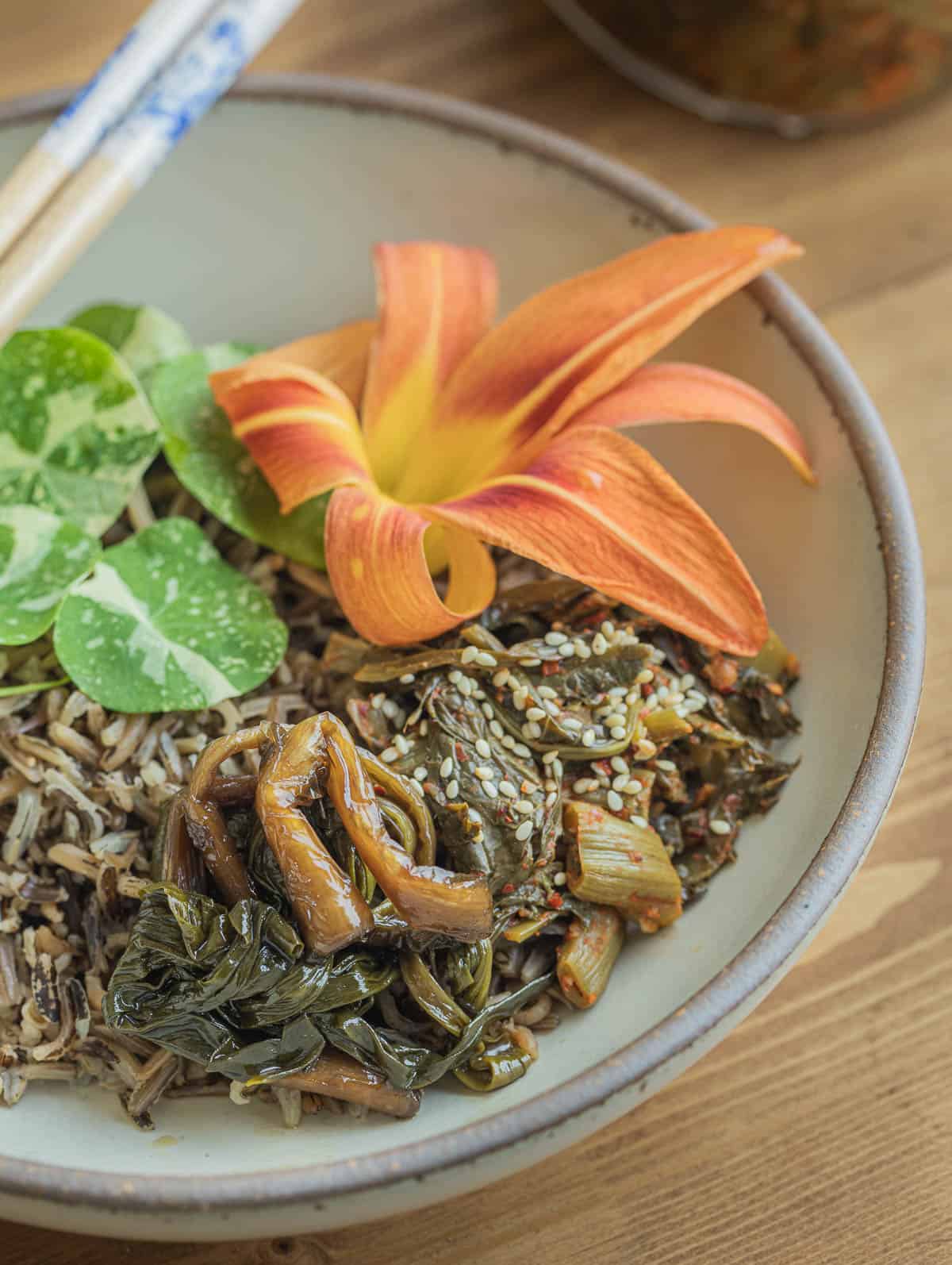
Related Posts
Ramps: Harvesting, Sustainability, Cooking and Recipes
Pickled Ramps
Equipment
- 3 Pint mason jars
- 2 quart sauce pot
Ingredients
- 1 lb Ramp Bulbs or as many will fit in 3 pint jars.
- 3 cups water
- 1 Tablespoon kosher or sea salt
- ⅓ Cup sugar
- 1.5 cups rice wine vinegar see note
- 2 Tablespoons pickling spice
Instructions
- Wash and clean the ramps. Remove any remaining taproots from the wild leeks, as well as any dirty, clinging sheath. Remove the leaves and save for another purpose (they can be pickled too). Any healthy taproots can be planted in your yard.
- Pack the pint jars full of ramp bulbs, leaving ½ inch headspace. Allow them to come to room temperature.
- Bring the water, vinegar, salt, sugar and spices to a boil.
- Pour the bring over the ramps in the jars right up to the brim (you don't have to leave as much room as you won't water bath can them). The brine must be boiling hot.
- Screw the lids on tight, then turn upside down and allow to cool. After cooling, the ramps will be shelf stable just like if they were water bath canned.
- Alternatively, store the ramps covered in their liquid in your fridge, without canning. They'll last a long time, at least until next ramp season.
Video
Notes
Vinegars
It's important to use rice wine vinegar here. Apple cider vinegar, champagne or white wine vinegar can all make your ramps turn blue.Sugar
You can cut the sugar down to ¼ cup if you like, or use a substitute.Myeongi (Korean Pickled Onions)
For the Korean pickled onions, use the following proportions. Put the whole ramps in a bowl, add the hot liquid and wrap the top in cling film to catch steam until wilted, then store in the fridge covered in the liquid. For one pint jar you'll need:- ½ cup soy sauce
- ½ cup water
- ½ cup rice wine vinegar
- ½ cup sugar
- 6 oz ramps with attached leaves, or just leaves and stems
- 1 teaspoon Szechuan peppercorns (optional)
- 1 small thai chili or equivalent (optional)
Nutrition
Like most pickles, they'll last for a long time as long as the jar is sealed-I've used some that were 2-3 years old. After opening the jars should be refrigerated.
Yes, just substitute them in a pickled ramps recipe. They won't be quite as crisp as fresh.
Yes. You can do this by pouring hot pickle liquid over them in a bowl, wrapping in cling film until wilted, then transferring to a jar. You can also use cold pickle liquid to preserve the texture. Do not process them in a water bath or they'll be mushy.
This has to do with the vinegar. Apple cider vinegar, white vinegar, and white wine vinegar will cause pickled garlic and wild leek bulbs to discolor. If you use rice wine vinegar it won't be an issue.

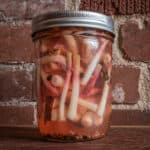
dave
Can you do all canning using the upside down method versus the traditional bath way?
Alan Bergo
No. Typically this is something to do and keep in the fridge, but I'll use it for a few other things like these fiddleheads-it is only when I want to keep something crunchy. A negative I've found is that they won't last quite as long as water bathing or pressure canning. 8 months to a year, if they last that long in my house.
dave
Thanks Alan! Have you ever found a way to keep veggies crisp with traditional water bathing?
Alan Bergo
No. Fermentation is what you want for that. Add a grape leaf or an oak leaf to fermented pickles and it works like a charm. The tannins keep things crisp.
Alex
For the rice vinegar do I use the “seasoned” (sushi) rice vinegar or does it have to be clean/unseasoned rice vinegar?
Brock
Excited to try these! How long should I leave them before opening to eat? If it matters, I refrigerated them. I did two jars of bulbs and one of leaves
Alan Bergo
They're fine to open right now. Often when I would make them in restaurants we'd use them that night.
Bob
What does “T” stand for? Tablespoons or Teaspoons?
Alan Bergo
Tablespoons are always a capital T. Since teaspoons are smaller, they’re always a small t.
Bob
Thank You🙂
Alan Bergo
Of course!
Marge
This recipe is different from the one in your book but I think I actually like it more. Did you cut down the sugar?
Jeremiah
These turned out great. Thanks for responding to my email with all my questions too.
Stephanie
Last year when I made this, I cut down on the sugar by half (as I usually do) and they were delicious, but still felt like the sugar could come down a little more. I also added red pepper flakes. Love your recipes and pics!
Alan Bergo
Thanks Stephanie. You can always adjust the sugar to your taste. This was the recipe we sold at Heartland in our market and cooked with on the line, so it has a special place in my heart. I like pickles with sugar and without, it just depends on what I'm feeling like doing. I don't like sugar in my mushroom pickles at all but with onions I usually do.
Ella
Hi Chef Bergo!! Are you blanching the ramps in salty water (to prevent them turning dark) b e f o r e you add them to the spiced water? Or does that count as the blanch?
Alan Bergo
Cooking the ramps in the water before adding the vinegar is the blanch, that way, no flavor is lost, so you can use the pickling liquid and it is full strength.
Ella
Thank you! (sorry it is so late)...
Amy
Alan, do you preferred harvest stage for pickling?
Alan Bergo
Yes I like older ramps as they keep a better texture. Smaller ones are good but they're mild and can get mushy if pickled too young.
Amy Passaro
Thanks, chef! Excited to pickle this year. Appreciate your tips on sustainable harvesting.
Alan Bergo
Thanks Amy.
Miachel | spiced curiosity
Thanks for the note on blue discoloration. Will try out this recipe tonight, sans sugar. 🙂